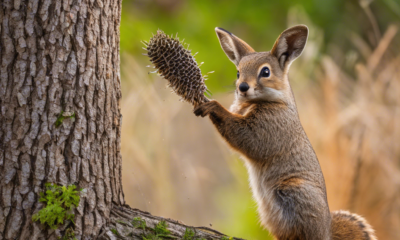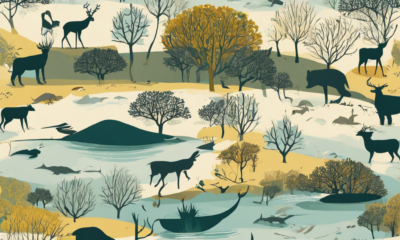Wildlife
The Role of Sanctuaries in Wildlife Protection

Wildlife sanctuaries have become vital havens for countless species, offering protection and a glimmer of hope amidst the escalating challenges of habitat destruction, poaching, and climate change. These dedicated spaces provide a safe environment for diverse flora and fauna, playing a pivotal role in the preservation of our natural world.
The concept of wildlife sanctuaries is rooted in the profound understanding that our planet’s biodiversity is under constant threat. Human activities, such as deforestation, urbanization, and pollution, have encroached on natural habitats, leaving countless species vulnerable and displaced. Sanctuaries emerge as essential refuges, offering a sanctuary-like environment where wildlife can thrive, unencumbered by the perils of human interference.
Within these protected areas, the primary focus is on the well-being and conservation of animals. Sanctuaries provide a range of habitats, carefully designed to cater to the diverse needs of different species. From expansive grasslands for grazing herbivores to densely forested areas for elusive predators, these environments mimic natural ecosystems, allowing animals to display their natural behaviors and adapt seamlessly.
One of the key advantages of sanctuaries is their ability to facilitate wildlife rehabilitation. Injured, orphaned, or displaced animals find solace and specialized care within these facilities. Skilled wildlife rehabilitators work tirelessly to nurse these creatures back to health, with the ultimate goal of releasing them back into the wild whenever possible. This process not only aids individual animals but also contributes to the overall stability and resilience of ecosystems.
Moreover, sanctuaries serve as invaluable educational hubs. They offer visitors a unique opportunity to observe and learn about wildlife in a controlled and ethical manner. Through guided tours, interactive exhibits, and educational programs, people of all ages can develop a deeper appreciation for the natural world and the importance of conservation. This, in turn, fosters a sense of environmental stewardship and encourages individuals to take action to protect our planet’s precious biodiversity.
The role of sanctuaries extends beyond their immediate boundaries. Many sanctuaries collaborate with research institutions and conservation organizations to study wildlife behavior, monitor population dynamics, and contribute to broader conservation efforts. By sharing their findings, these sanctuaries become essential contributors to the global knowledge base on wildlife protection and ecosystem management.
In conclusion, wildlife sanctuaries are indispensable guardians of our natural heritage. They provide a lifeline to countless species, offering protection, rehabilitation, and a chance at survival. Through their multifaceted roles in conservation, education, and research, sanctuaries play a pivotal part in ensuring a sustainable future for our planet’s biodiversity. As the threats to our natural world continue to grow, the importance of these protected havens cannot be overstated.
-

 Training11 months ago
Training11 months agoInquiry Regarding Document Review
-

 Adoption1 year ago
Adoption1 year agoHow to Help a Rescue Pet Adjust to Their New Home
-

 Wildlife1 year ago
Wildlife1 year agoProtecting Endangered Species: What You Can Do
-

 Wildlife1 year ago
Wildlife1 year agoEncouraging Wildlife in Your Backyard Safely
-

 Adoption1 year ago
Adoption1 year agoFinding the Right Rescue Organization for Your Family
-

 Training11 months ago
Training11 months agoApple Smartphones in 2024: Revolutionary Features and Why They Dominate the Market
-

 Wildlife1 year ago
Wildlife1 year agoHow Climate Change Affects Wildlife Ecosystems
-

 Adoption1 year ago
Adoption1 year ago10 Things to Know Before Adopting a Pet
















